Great with its height and the greatest at its affection, the tally Great Dane is one such breed you ought to know.
The breed is believed to be the largest breed of all times.
Originally bred as a boarhound, this dog hails from Germany and in the present day is a popular homely pet animal.
Great Danes are popularly known as the “gentle giant”.
Gentle with its nature and giant in its size.
Table of Contents
Quick Facts

Avg. Weight: 140-175 pounds (male) and 110-140 pounds (female)
Avg. Height: 30-32 inches (male) and 28-30 and inches (female)
Life Expectancy: 7-10 years
Dog Group: Working Group
Colors: black, fawn, blue, mantle, brindle, Harlequin
Other Names: Dane, Apollo of dogs, gentle giant, German Mastiff, Deutsche doggie
Dog Rank: 16/193 (United States of America)
At A Glance
Size (5/5)
The Danes are the largest in all dogs.
The massive breed is a full-size living being with 175 pounds of weight and 32 inches of height at shoulder level.
Affection Level (5/5)
Great Danes are lovely companion dogs.
They are the best within the family and will give you all that they have in the form of love and care.
The affection level with the family is so pure that the breed can sense human emotions.
Apartment-Friendly (1/5)
The size composition of apartments is smaller for Dane’s full-fletched growth.
However, many contradict with the opinion that although the canine is large in size, they adapt well in apartments with the basic amenities.
Cold Weather Tolerability (2/5)
This canine reacts poorly to extreme climates.
They would love to be in cold but not where the weather can drop the temperature to intolerant degrees.
Hot Weather Tolerability (3/5)
In the summers too, the Danes would prefer being indoors in air-conditioned environments to that for the scorching heat.
Keep in mind the dog breed’s adaptability to selective weather conditions before welcoming the pup home.
Barking Tendencies (4/5)
Great Danes are the barkers you would look for.
Not only do the bark often but they bark loud and sonorous.
Your neighbors are likely to shut their ears in annoyance with the barking sounds.
Keep in mind before getting a Dane pup home.
Cat-Friendly (4/5)
Usually, the dog is friendly to all animals around but they have a tendency to chase cats and other smaller animals.
You will need to teach your pooch how to behave around with cats.
Dog-Friendly (5/5)
Generally, Great Danes are friendly with dogs unless proven opposite.
They look aggressive and unfriendly but one should not judge a dog breed on its looks.
Exercise Needs (5/5)
Large breeds generally require a lot of play and exercise.
But this muscular breed will not force you to remove your time for heavy workouts and play.
Just 30 to 60 minutes of normal walk or play daily is sufficient for a healthy Great Dane.
Grooming Needs (4/5)
The “gentle giants” are gentle enough to shed much.
The large size does not come with much of the grooming requirement.
But they do drool and keeping you would need to keep moving behind it for the chin wipe several times a day.
Dane owners must limit the baths to once in 2 weeks to retain the natural essential oils of the body.
Playfulness (5/5)
If you as a dog owner are a playful person, expect your Great Dane to be playful as well.
The pet dog is the happiest when with the owner and displays the best of its playfulness around them.
Trainability (5/5)
One characteristic that stands them out is that the Great Danes are people-oriented dogs.
This makes it enormously easy for professionals to train and instruct them.
The dog breed is respondent to clear commands.
Intelligence (3/5)
Great Dane is neither a foolish dog nor a very highly intelligent canine.
Their intelligent is midrange corresponding to their tactical skills and body orientation.
The breed has used its intelligence as protecting guard dogs for their families.
Mouthiness (2/5)
Do you like dogs with cuddles and friendly licks?
You would be the happiest to know that the Great Dane can be mouthy.
Their mouthy behavior is moderate.
Price Group (3/5)
A Great Dane puppy price ranges from $600 to $3,000.
The price comes with its massive size.
The Harlequin Great Dane is among the most expensive ones because of its attractive rare color.
About Great Dane
Puppy:
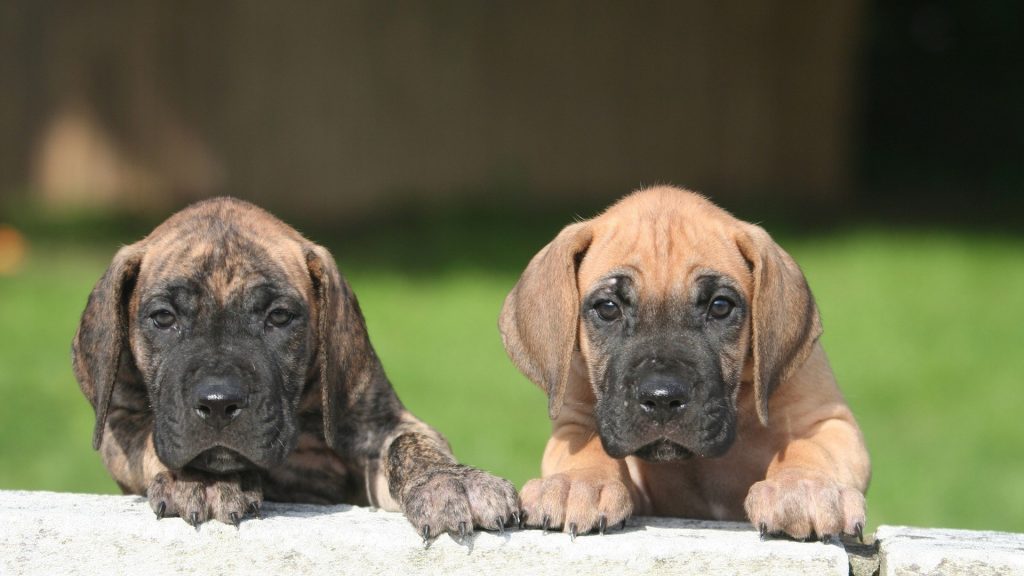
As a puppy, you will not be able to imagine the huge size this dog will take in your house and in your heart over time.
At the time of its birth, the dog will weigh 1 to 2 lbs.
It is this phase when you need to give nutritional value and the right training and care to your Great Dane puppy.
Dane puppies are adorably wonderful to have in your laps.
However, do not make this a habit as the dogs are laughed upon being the largest lapdogs in the world as adults.
Adult:
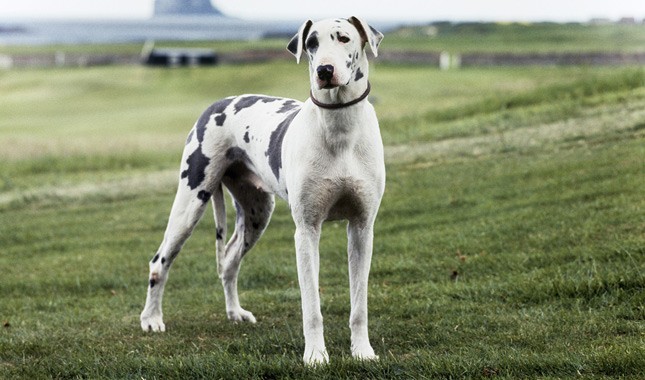
An adult Great Dane dog is a massive fully grown dog up to the range of 175 pounds and 32 inches.
Many adult dogs have grown beyond that size as well.
Great Danes are given the name of “Apollo of dogs” in size and spirit.
Apollo is a Greek name that signifies strength and courage.
This majestic dog will stand taller than you once on its hind legs.
Such is its power and bold looks.
Where Great Danes Came From?
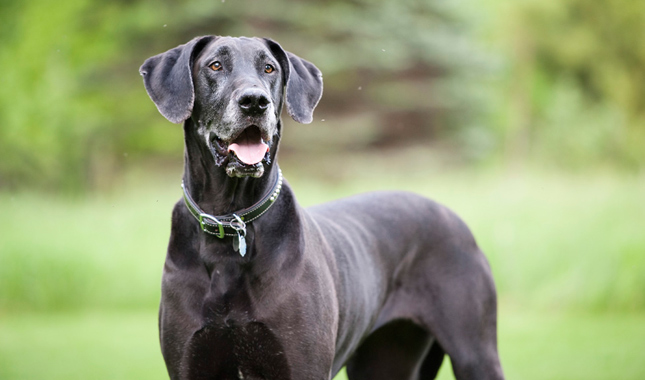
The tall sleek canine comes from the European country Germany.
They were popularly bred to hunt boar.
The dog was christened with the name Deutsche Dodge which took years to take the present-day name that was given in Denmark.
The originality of the breed is not from Denmark, which most of us easily believe with the name “Dane”.
The Great Dane is today the national dog of Germany and ranks the 16th most popular dogs in the American Kennel Club list.
Size

The great dog comes with great size.
You will know it is a Great Dane in the first sight of this sleek and elegant companion dog.
A male Dane will weigh about 175 pounds where the female weighs lighter for about 140 pounds.
The height of the dog is one a massive one with a square-shaped body and long pointed ears.
Trainability
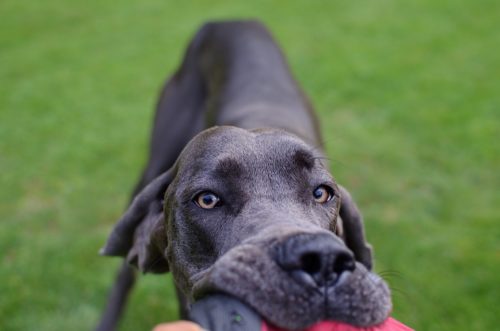
Training is an essential step.
Dog owners should start training their Great Dane pups at an early age to prevent them from becoming couch potatoes.
Training a Great Dane is not very difficult.
The dog is said to be a people-oriented breed which makes it not very difficult while training.
Early socialization at the time of training is necessary for your pooch to be friendly around people and young children.
Also, one important aspect of training is to teach this mighty animal not to jump over people because it is hell scary for strangers to have this tall dog over them.
Grooming
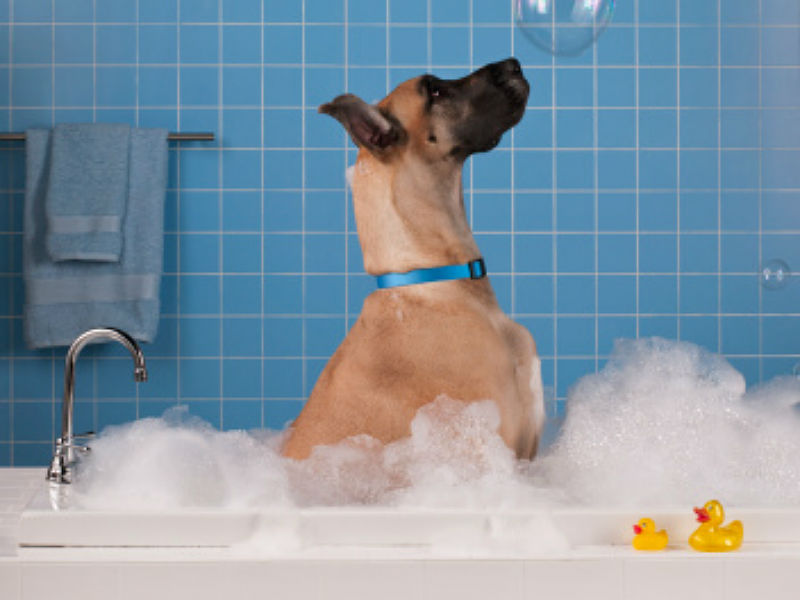
Grooming your canine is necessary for the removal of excess loose hair and dirt stuck around the body.
Dogs this huge tendency to get dirty while playing and wandering around.
Keep the dog clean with wet towels particularly during the shedding season as this is the time they tend to lose hair excessively.
Read about how to keep your dog cool in the shedding season in this article.
Common Diseases
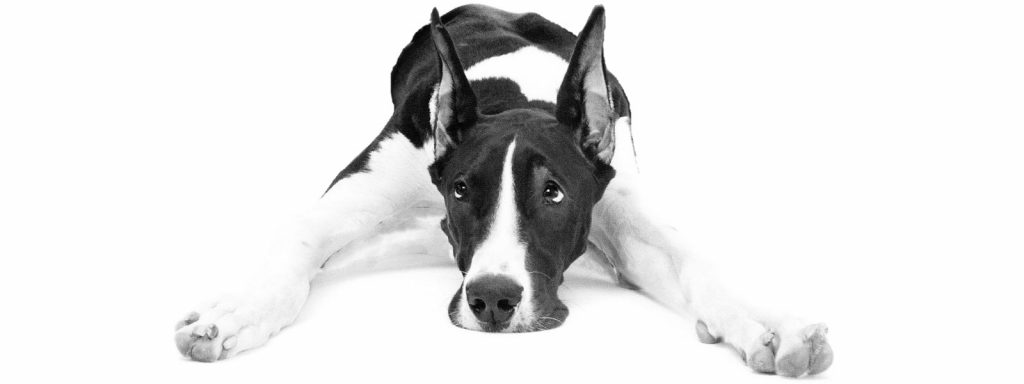
This dog breed’s large size comes with many diseases that can cause a serious threat to it physically and mentally.
The following are a list of diseases that a Great Dane is likely to have in accordance with the organ it targets.
Great Dane health issues are as follows:
TARGETING THE HEART
- Dilated Cardiomyopathy:
This disease generally targets large-sized dogs.
In a dilated cardiomyopathy condition, a canine’s heart is fragile and unable to pump enough blood developing signs of congestive heart failure.
The blood pressure in the dog’s body tends to increase and worsen up the situation.
Through medication as the advice of the vet, the disease is curable.
TARGETING THE BONES
- Hip Dysplasia:
Hip dysplasia is a common disease in all dogs.
In the Great Danes, the condition is genetic.
Prior to getting in a Dane pup, you will need to do a thorough check of any history of hip dysplasia as it is obtained genetically.
Hip dysplasia can cause severe pain to the dog in one or both the hips, unfortunately!
This would restrict their walking and other physical activities.
Although it is a genetic disease, the right care from the early weeks of the Great Dane pup can help avoid this condition.
If not, it can lead to dangerous conditions of arthritis and severe bone pain.
- Elbow Dysplasia:
Elbow dysplasia is a disease that causes a heredity malformation of the elbow joint of your Dannie dog.
The vet needs to see the severity of the malformation before any treatment suggestion.
Do not worry, the treatment is possible and your dog would recover soon.
- Wobblers’ Syndrome:
Mostly seen in giant-breeds, the Great Dane dog is predisposed to slipping spinal disks.
This is an inherited genetic disease where the diagnosed dog will suffer from spinal cord compression caused by cervical vertebra instability.
The malformation will compress the spinal cord from both ends making it difficult for the dog to stand straight.
As Great Danes are tall dogs, this malformation can severely affect their body growth.
If untreated, the severity can cause the dog’s neck to pain and paralysis.
TARGETING THE HORMONES
- Hypothyroidism:
Hypothyroidism in Great Danes is caused by a deficiency of thyroid hormone in the body.
The severity of this disease can cause infertility, mental dullness, and obesity in the dog.
TARGETING THE EYES
- Entropion:
Entropion is a genetic disease.
It leads to the folding of the eyelid internally which gives a lot of uncomforting irritation to the dog.
Scratching over the same would lead to corneal ulcers and other eye-related problems in the Dane dogs.
- Ectropion:
Ectropion in dogs is a condition of the eyes where the lower eyelid rolls out of the eyes of dogs that have loose wrinkled skin around the face.
The disease can cause nerve damage and corneal injury.
- Cherry Eye:
Popularly known as the cherry eye disease, is a condition where a cherry-like a mole is formed in the corner of the Great Dane’s eye.
This mole is excessively painful to the massive dog.
TARGETING THE STOMACH
- Gastric Dilatation-Volvulus:
The most common disease in this dog bread, gastric dilatation-volvulus is a disease occurring to large dogs with deep chests.
GDV is also known as bloat or torsion is a gastric problem in dogs.
This is a result of overfeeding or the rapid speed at which the dog consumes its meal.
The blood pressure can potentially drop and the dog can have a shock.
TARGETING THE CANCER BONE
- Osteosarcoma
Osteosarcoma is the scientific name of the bone tumor.
5% to 14% of Great Dane dogs are prone to this disease.
Generally, larger dogs are the ones diagnosed with this type of cancer.
Just like in humans, the dog breed also requires chemotherapy to get cured.
TARGETING THE BODY
- Giant Breed Health Problems
Larger the dogs, larger are its health problems.
You need to keep yourself prepared with the pros and cons that come along once you’ve decided to bring home the massive Great Dane.
Large size dogs live up to 14 years but the giant ones are there for not more than 10-12 years.
Whatever they live after this age is a gift.
Cancers are common in large size breeds and you need to keep the dog and yourself prepared for it.
FEEDING
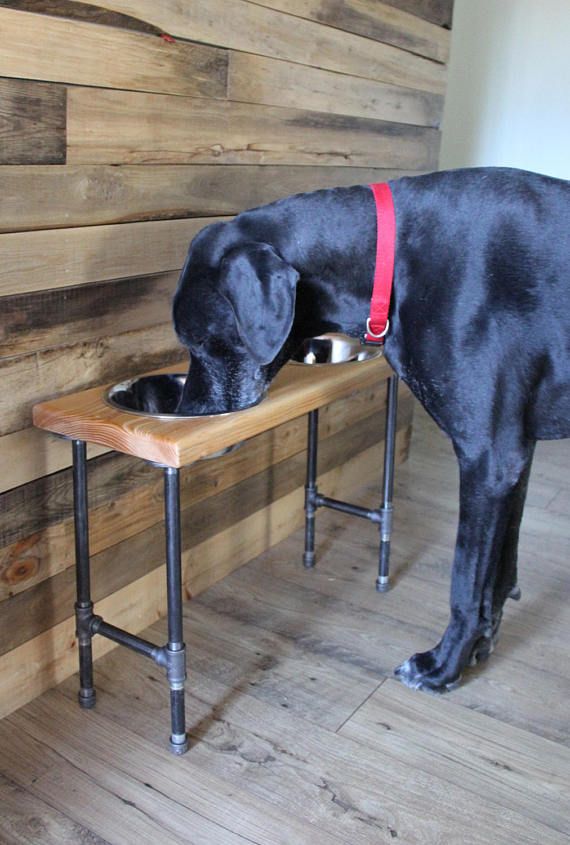
Feeding a Great Dane dog must have a high value of proteins and lover value of fats in their diet.
Higher the meat protein over grain protein, higher the digestive ease to the dog.
The daily supplements should include 7-10 cups of dry food depending upon the size of the Great Dane.
The following are a number of food items that should and should not be included in the dog breed’s diet.
The breed is a massive one and has a large requirement of food intake.
What the breed loves is organ meat and it should be a part of their diet.
TO INCLUDE
| Yogurt | Fish |
| Eggs | Oatmeal |
| Carrots | Lamb |
| Chicken protein | Salmon |
| Green beans | Sweet potatoes |
| Peanut butter | Apple |
| Turkey | Pumpkin |
NOT TO INCLUDE
| Garlic | Grapes and raisins |
| Caffeine | Alcohol |
| Avocado | Chocolates |
| Garlic | Onion |
| Sugar | Chives |
| Salt | Soy |
| Corn products | Shallots |
| Fish with bone | Gravy |
Suggested: Senior Dog Food
Vaccination And Care
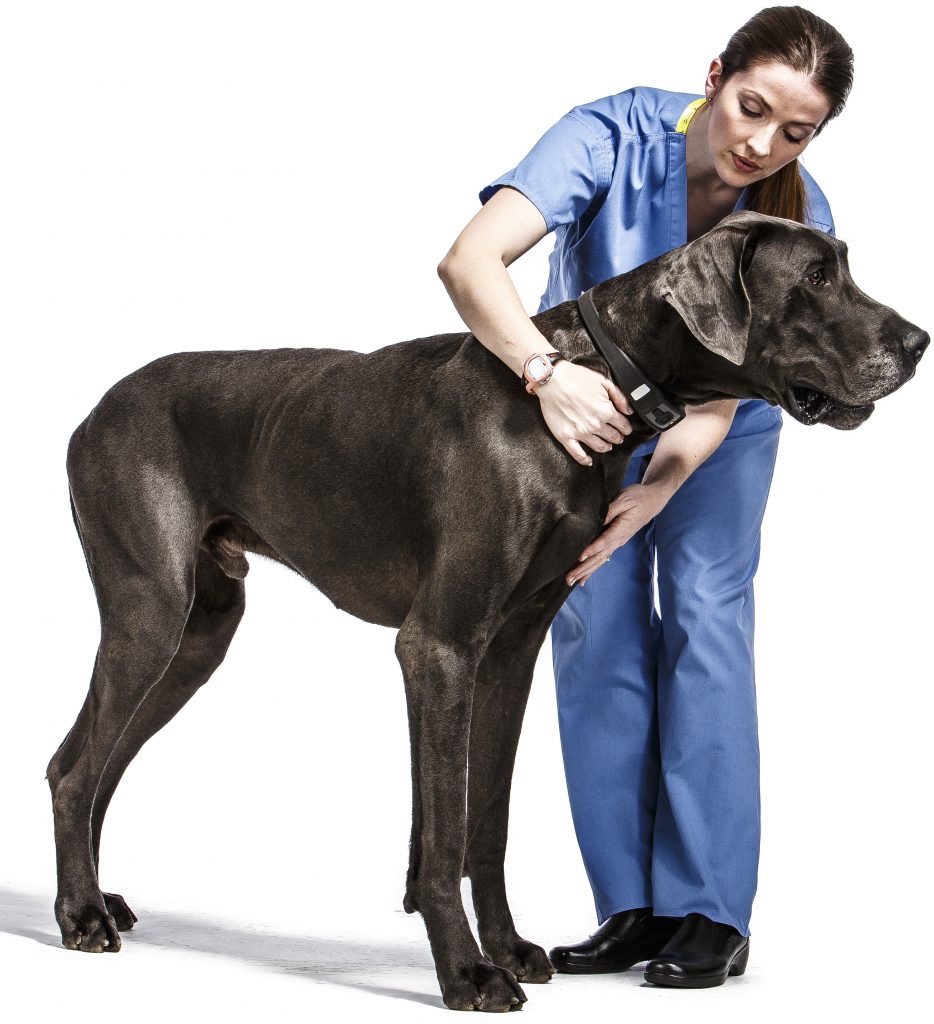
Your Great Dane dog vaccination schedule needs appropriate attention and concern.
The following is a list of vaccinations necessary for a Great Dane pup.
Note: DHPP stands for distemper, hepatitis, parainfluenza, and parvovirus respectively.
- 6-8 weeks: distemper and parainfluenza
- 10-12 weeks: DHPP
- 12-24 weeks: rabies vaccination
- 14-16 weeks: DHPP
- 12-16: rabies vaccination and DHPP
- Every one to two years: DHPP
- Every one to three years: rabies vaccination (required by law)
Suggested: Guide To Dog Vaccination
Monthly Expense Estimation
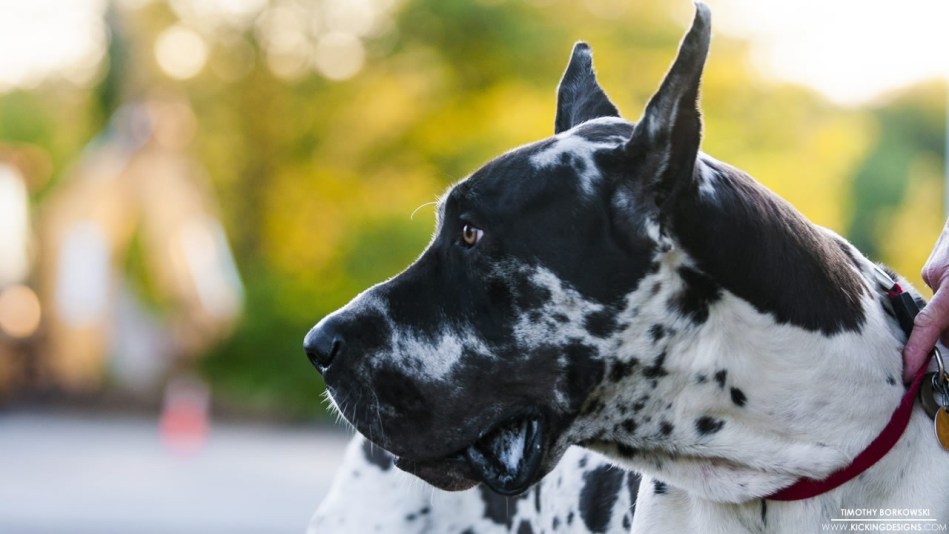
- Initial Cost:
A Great Dane puppy for sale at a breeder will cost you about $600 to $3,000.
Harlequin Great Danes can go even higher with their prices.
- Veterinarian And Vaccination:
This is a section where you as a Great Dane dog owner will empty your pockets.
The breed is prone to a number of diseases.
Around 150 to 200 dollars is a must to have regular vet checks and vaccinations.
This does not include the expenses that arise out of sudden sicknesses.
- Feeding:
The massive breed consumes a lot over his bowl.
Keep around $60 to $80 every month for the dog’s feeding expenses.
A male Dane will consume more food than a female.
- Snacks:
Your gentle giant will require snacks to keep him active for exercise.
An estimated value of $50 to $70 is all that you will need.
- Toys:
All dog breeds are fond of toys.
You will need a few to keep your dog engaging at home with your time of course.
$30-$60 is the expense you will incur.
- Grooming:
Great Danes do not really have grooming needs.
They shed little and do not require expensive soaps and shampoos for regular bathing.
About $20 is sufficient for this purpose.
Behaviour With
Children:
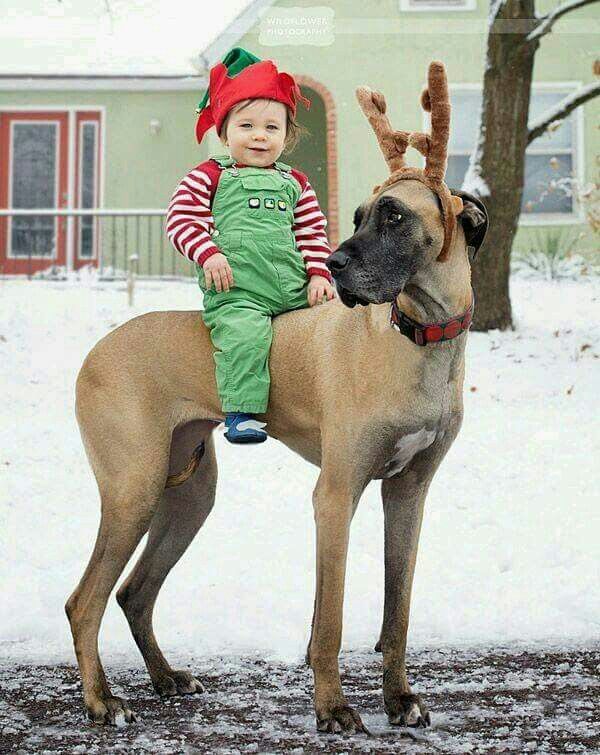
Massive dog with a massive heart for kids.
Yes, your Dane pup will do very well along with kids.
But this requires supervision.
One turn around by the dog and the tail swipe can knock dog your little child.
Dogs:
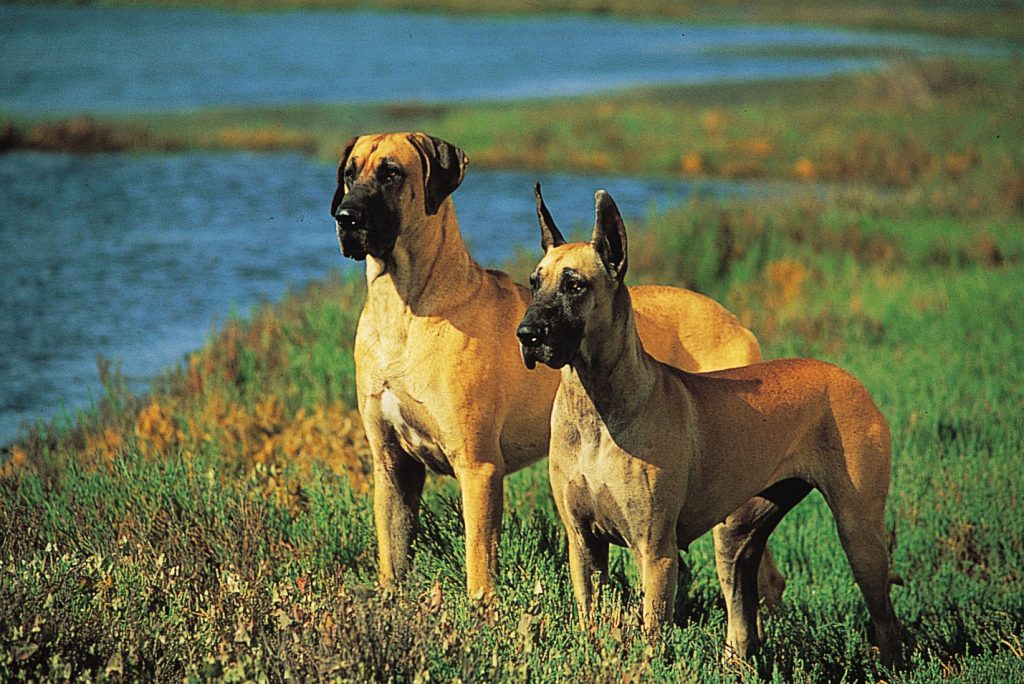
The “Apollo of dogs” Great Danes are friendly dogs that get along well with other dogs on being trained upon.
They are one of the most highly trainable dogs and early socialization can make them good dogs with others.
Cats:

Great Dane dogs and cats, do they get along well?
The answer is not a complete no.
It depends upon how the dog is raised.
An early socialized Great Dane will be friendlier to that who is kept untrained.
The canine will have a tendency to chase cats which is not a good sign for cat lovers.
Overview
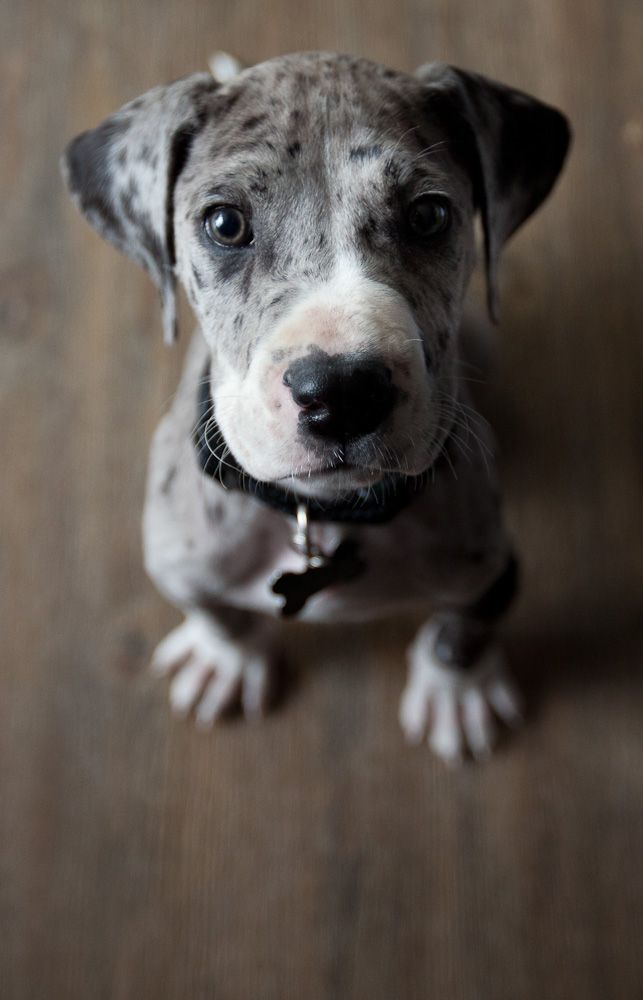
The greatness of the dog comes with a great name alongside a great size.
The Great Dane dog breed hails from Germany and not Denmark which most of the people mistaken.
It is a massive breed with an even more massive heart.
The reason why is popularly known as the “gentle giant”.
This Apollo of dogs is a breed you need to have with a big house, bigger backyard and the biggest heart with love.
Harlequin Great Danes are attractive looking dogs with two colors.
The breed will live for 10 years with memories of a lifetime.
What you need to give is a bit of your time, some money and all the love you have to see the best of this breed.
Something Fun About Great Danes
- Scooby-doo
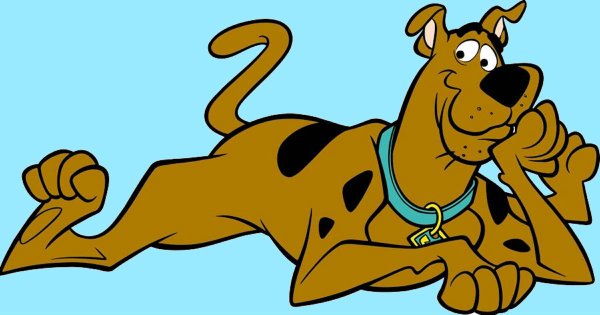
Your childhood was an incomplete one if you haven’t watched the highly popular show named Scooby-doo featuring a brown-colored dog with a few of its human friends.
The comedy cartoon show was one of the favorites till the time it featured on screen.
What you need to know about the show is that the dog Scooby was a Great Dane.
The show gave immense popularity to the dog breed in just a few days.
This was from our side featuring the great dog, Great Dane.
We would like to hear from you in the comment section below.
Write to us in the comment section!
Happy Petting To You!



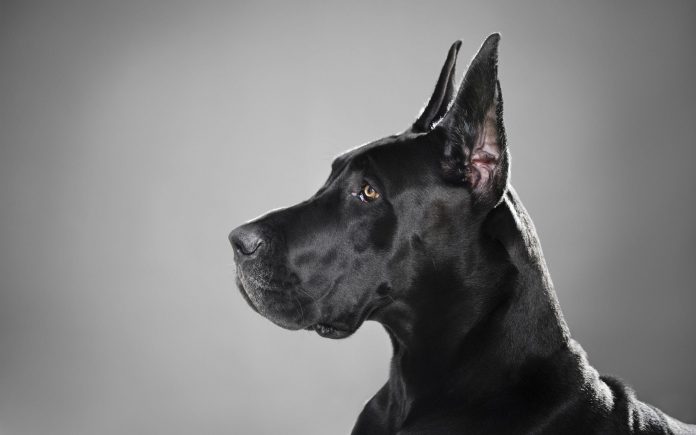









[…] Great Dane […]
[…] Saint Bernard. When it comes to body mass and sturdiness the English mastiff also leaves behind the Great Dane and the Irish […]